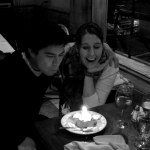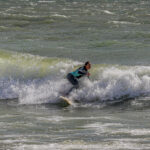As a summer English as a Second Langauge (ESL) teacher I often attend teacher training workshops. In a recent training session I attended, a grammar workshop, it was impressed upon us the importance of creating a learning environment in which we allow students to experience the language rule for themselves, rather than simply standing at the blackboard, teaching it to them.
Structuring education in this way, instead of simply lecturing from the front of the room – using the infamous Powerpoint slide presentation – and having the students memorize the information later on, sets the stage for learners to experience the all-important “Aha!” Moment.
This “Aha!” Moment occurs when a student finally comes across the answer to a problem on their own and where things suddenly begin to make sense. In literature, we say that the answer “dawns on them” and, in cartoons, an aha moment is depicted by a light bulb blinking on above a character’s head as he or she exclaims, “Eureka!” In real life, aha moments are just as exciting – although, in my class, “Aha!” sounds more like, “uuhhh? huh. Aaaaaahhhh!” As educators, we are able to witness the students’ faces literally light up as smiles stretch widely across their faces and experience the creative buzz of life and energy that fills the classroom.
It needs to be said, however, that modelling education in this way is difficult. As teachers, we have to tailor a lesson to the students’ individual learning styles, predicting the path it will take them to reach the answer, and then laying prepared crumbs of information along that path. Lessons must be cleverly planned, with a great deal of creative input on the part of the educator, and attention must be closely paid to setting proper context and creating a genuine learning experience for the students. In this kind of “Discovery Learning” model of education, teachers act as support structures or guides, and lurk behind the scenes, rather than acting as figures of authority and expertise.
Because of the difficulty and creativity involved in creating lessons like these, we find that most education is modeled as the traditional lecture method. The lecturer stands in front of the classroom and showers the students with information, like a bag lady scattering birdseed. The students respond, in turn, by gathering around the feed like fat, passive pigeons, instead of taking wing and living the genuine, natural experience of finding food for themselves.
As a lifelong student I can attest to the fact that the traditional lecture method is tedious, boring and passive. It is also time-consuming and involves extensive studying of the material outside of the classroom, as students rely on repetition and memorization to make the material memorable. This is due to the fact that providing information via lecturing is not memorable in itself. The worst thing about lecture-style education, however, is that, by lecturing students, we are robbing them of experiencing their own aha moments. Students are given information and, therefore, will never truly own it for themselves, no matter how many board exams they pass. Their confidence is not boosted and, most detrimental of all, their creativity is never nurtured.
So, how does all of this relate to naturopathic medicine? As naturopathic doctors, one of our principles is Docere, or “doctor as teacher”. This, for me, is one of the most important distinguishing factors between naturopathic doctors and medical doctors. Rather than silently taking notes on the patient’s ailments and untidily scrawling out the name of a medicine on a prescription pad for the patient to take, we open up the lines of communication and share our diagnostic process with the patient as well as our treatment plans and the reasons behind them. This method is critical to our profession because it serves to motivate, empower and inspire the patients, making them active participants in their own healing.
Now it’s time for me to turn the bill over to you, readers. I ask you: how are we teaching patients? How much of our naturopathic Docere principle involves simply lecturing? How much of our doctor-as-teacher teaching do patients truly remember and understand?
I wonder if we naturopathic medical students (and practicing NDs) can’t find ways to apply the aha moment- teaching style to our doctor-educator role in the clinic. Any ideas?







I learned of your blog at Truth & Cake and loved it from the first moment; hence it’s nominated for Inspiring Blogger Award, do check out my last entry. 😉
Love and Light
mdr
This is amazing! What an honour! I will do a post tomorrow on it! Thanks so much for the love!